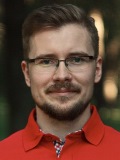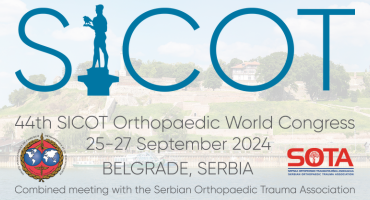
History of Orthopaedics
The History of Orthopaedics in Belarus
 Pavel Volotovski Pavel VolotovskiSICOT Associate Member & SICOT Newsletter Editorial Board Member - Minsk, Belarus |
Before the First World War, Belarusian Orthopaedics was part of General Surgery. It is known that in the beginning of the XIX century Karl I. Gibental worked as a surgeon and inspector on the Minsk and Vitebsk medical boards. In foreign literature, the idea of plaster cast is associated with the name of the Flemish surgeon Mathisen and in Russia it is with N.I. Pirogov. However, Karl I. Gibental started to use plaster bandage for the treatment of long bone fractures long before them, in 1812.
From an historical point of view, orthopaedics as an independent branch of medicine began to develop in 1921, when the prosthetic orthopaedic workshop was founded in Minsk for disabled veterans of WWI and the civil war. In 1926, a course of orthopaedics and traumatology was organised at the medical faculty of the Belarusian State University. Associate Professor M.N. Shapiro was the head of this course. Thanks to him, the first orthopaedic outpatient clinic with massage and physiotherapy rooms with X-ray facilities was created in 1927.
However, properly organised orthopaedic care has been provided since 1930, after the foundation of the State Institute of Physiotherapy, Orthopaedics and Neurology (GIFON) with Prof D.A. Markov as the Director. The orthopaedic department consisted of 22 beds, operating room equipped with good enough instruments for those times, dressing room, physiotherapy room, mechanotherapy, massage and physiotherapy facilities, X-ray, and so on. For outpatient care, there were three rooms: two for the reception of patients and one for outpatient interventions. Subsequently, the inpatient department was expanded to 60 beds.
In the pre-war years, the scientific research activities were aimed at degenerative-dystrophic processes in the bones, joints and spine. Experimental studies on animals were carried out to investigate bony changes in patients with nervous system abnormalities. At the beginning of the Second World War, the GIFON was closed down. Leading scientists were moved inland and worked in evacuation hospitals. Prior to the liberation of Belarus, the GIFON was restored and was renamed the Minsk Research Institute of Traumatology and Orthopaedics of the People's Healthcare Committee of the BSSR. The name of the institute has changed several times since. In fact, the institute re-opened in November 1944 as the 3rd City Clinical Hospital with 80 beds in a separate building. Disabled veterans were treated here. Six evacuation hospitals from all regions of the republic were “attached” to the institute. After surgical treatment, patients were transferred to other hospitals for rehabilitation.
By 1959, disabled veterans had been successfully treated by surgical management and more than 70% of them were able to return to work. However, further economic development posed new challenges to the orthopaedic society. These challenges included reducing the incidence of injuries caused by industrial, farm, and road accidents, as well as finding effective methods of treating bone fractures, especially intra-articular, which often lead to disability. Great attention was paid to child injuries. The department of paediatric orthopaedics with 80 beds opened in 1956 and the outpatient department of paediatric orthopaedics opened in 1968.
The academic departments of Traumatology and Orthopaedics opened in four medical universities situated in Minsk (1958), Vitebsk (1970), Grodno (1973), and Gomel (1995) and also in the Academy of Postgraduate Education (1953).
Today, the National Scientific and Practical Centre for Traumatology and Orthopaedics is the leading organisation in the area of orthopaedic care in the Republic of Belarus. It consists of 8 scientific subdivisions and 8 clinical departments with 340 orthopaedic and 12 anaesthetic-reanimation beds. There are about 8,000 orthopaedic surgeries per year: more than 600 hip joint replacements including over 150 revisions, about 300 knee joint replacements, 800 arthroscopic surgeries, and around 900 spine surgeries. The centre has always been headed by eminent scientists, namely I.R. Voronovich (1972-1993), E.D. Beloenko (1993-2006), and A.V. Beletsky (2007 to the present day).
Time does not stand still, and the science of orthopaedics continues to develop according to the needs of modern society.









